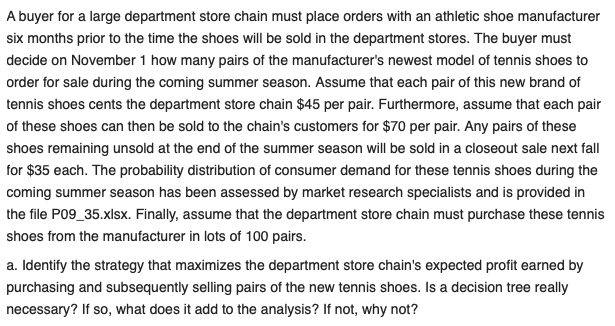strategy that maximizes the department store chain's expected profit earned by purchasing and subsequently selling pairs of the new tennis shoes. Is a decision tree really necessary
A buyer for a large department store chain must place orders with an athletic shoe manufacturer six months prior to the time the shoes will be sold in the department stores. The buyer must decide on November 1 how many pairs of the manufacturer's newest model of tennis shoes to order for sale during the coming summer season. Assume that each pair of this new brand of tennis shoes costs the department store chain $65 per pair. Furthermore, assume that each pair of these shoes can then be sold to the chain's customers for $85 per pair. Any pairs of these shoes remaining unsold at the end of the summer season will be sold in a closeout sale next fall for $55 each. The probability distribution of consumer demand for these tennis shoes during the coming summer season has been assessed by
a. Identify the strategy that maximizes the department store chain's expected profit earned by purchasing and subsequently selling pairs of the new tennis shoes. Is a decision tree really necessary? If so, what does it add to the analysis? If not, why not?

Trending now
This is a popular solution!
Step by step
Solved in 2 steps with 1 images


